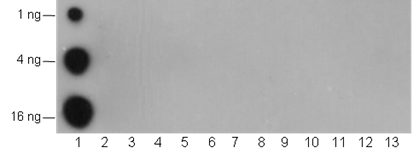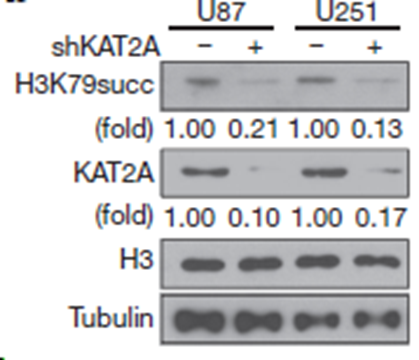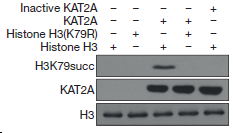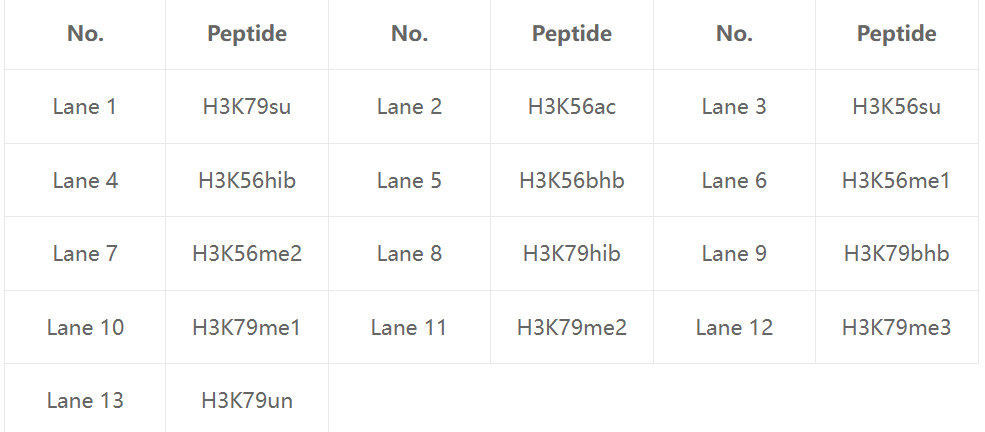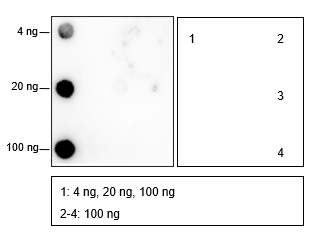Background
Succinylation is a post-translational modification where a succinyl group (-CO-CH2-CH2-COOH) is added to a lysine residue in proteins, including histones. This addition of succinyl group changes lysine's charge from +1 to -1 (at physiological pH) and introduces a relatively large structural moiety (100 Da), bigger than acetylation (42 Da) or methylation (14 Da). It is expected to lead to more significant changes in protein structure and function. Lysine succinylation, particularly at Lys79 on histone H3, is mediated by the enzyme KAT2A and has implications in tumor growth and disease progression. KAT2A-mediated succinylation is also observed in hepatitis B virus (HBV) infection, impacting HBV replication and epigenetic regulation.
Cellular location
Nucleus


